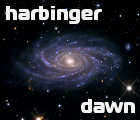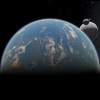|
Rocky planets sandwiched between two gas giants
|
|
| smjjames | Date: Monday, 03.09.2012, 02:17 | Message # 1 |
|
World Builder
Group: Users
 United States
United States
Messages: 913
Status: Offline
| In looking for planets with life on them, I'm noticing that they are often sandwiched between two gas giants. I know SE isn't a gravity simulator, but an orbit between two gas giants isn't exactly friendly to planetary formation.
Of course though, it could have been shifted sometime in the past (and somehow avoided being flung out of the system), but it doesn't really fit in with known planetary formation proccesses.

Edited by smjjames - Monday, 03.09.2012, 02:22 |
| |
| |
| smjjames | Date: Wednesday, 05.09.2012, 20:38 | Message # 2 |
|
World Builder
Group: Users
 United States
United States
Messages: 913
Status: Offline
| I don't even know where I should put this since it's part astronomy/science discussion and part game discussion, so here goes.
I know I've said that having a rocky planet between two gas giants might not survive, especially if the gas giants moved around, however a few days ago, I read this article on Space.com and saw near the bottom that they mentioned a system with two terrestrial planets in between three gas giants, which I didn't know actually did exist in that configuration.
So, maybe the SE procedural generation is onto something? After all, we find surprises all the time and we don't know everything about how solar system formation works.
Edit: Edited part of it so that it would make a bit more sense after Harbringer Dawn moved it here.

Edited by smjjames - Wednesday, 05.09.2012, 22:34 |
| |
| |
| HarbingerDawn | Date: Wednesday, 05.09.2012, 21:56 | Message # 3 |
 Cosmic Curator
Group: Administrators
 United States
United States
Messages: 8717
Status: Offline
| smjjames, creating a new thread about a very similar topic was not necessary. You should have posted your addenda here in the thread you already created.
All forum users, please read this!
My SE mods and addons
Phenom II X6 1090T 3.2 GHz, 16 GB DDR3 RAM, GTX 970 3584 MB VRAM
|
| |
| |
| smjjames | Date: Wednesday, 05.09.2012, 22:30 | Message # 4 |
|
World Builder
Group: Users
 United States
United States
Messages: 913
Status: Offline
| Quote (HarbingerDawn) smjjames, creating a new thread about a very similar topic was not necessary. You should have posted your addenda here in the thread you already created.
Yeah I guess I could have. I was thinking about the topic in more of an astronomy/science or game post rather than feedback, but yeah it would be better to keep it in one thread.
Going to have to edit it now though so it looks less out of place, and probably easier to understand.

Edited by smjjames - Wednesday, 05.09.2012, 22:31 |
| |
| |
| SpaceEngineer | Date: Thursday, 06.09.2012, 21:12 | Message # 5 |
 Author of Space Engine
Group: Administrators
 Russian Federation
Russian Federation
Messages: 4800
Status: Offline
| I know about real discovered systems with terrestrial planets and gas giants mixed up. This is why I've still not changed the code to prevent generating such systems. Nature is surprising as always 

|
| |
| |
| smjjames | Date: Thursday, 06.09.2012, 21:36 | Message # 6 |
|
World Builder
Group: Users
 United States
United States
Messages: 913
Status: Offline
| Yeah, according to what I knew about planetary formation, it wouldn't have worked, but then again, I didn't know about that system with the mixed small and large planets, so our current theories have been mostly thrown out the window.
It does seem a little too common and who knows, maybe this kind of thing really is common and that some mechanism or mechanisms are allowing the smaller terrestrial planets to survive between the gas giants.

|
| |
| |
| apenpaap | Date: Thursday, 06.09.2012, 21:43 | Message # 7 |
 World Builder
Group: Users
 Antarctica
Antarctica
Messages: 1063
Status: Offline
| It would probably be possible for rocky planets to survive being between gas giants simply by the distance between them being big enough in relation to the masses of the giants. Even if that's not the case, orbital resonances could save them, and in young systems it could probably exist even without orbital resonances and safely low masses and high distances, since it takes a long time for planets to disturb each others' orbit, even for heavy planets.
I occasionally stream at http://www.twitch.tv/magistermystax. Sometimes SE, sometimes other games.
|
| |
| |
| smjjames | Date: Thursday, 06.09.2012, 22:06 | Message # 8 |
|
World Builder
Group: Users
 United States
United States
Messages: 913
Status: Offline
| Theres also the fact about gas giant migration. They normally form inside the ice zone (where its cold enough for water to freeze), but if they move inwards, any planets in its path will get scattered (or captured, if extremely lucky), at least to my current understanding.
Who knows, maybe instead of violently flinging the planet into the sun or out of the system, theres a chance of it just gently pushing it outwards or inwards.
As I said earlier, we barely even know anything about the entire proccess. Sure we have a good idea of how it gets started, but the whole dynamics between initial formation and when accretion is over, we don't even fully understand yet.

|
| |
| |
 ENG
ENG




 United States
United States 



 Russian Federation
Russian Federation 

 Antarctica
Antarctica